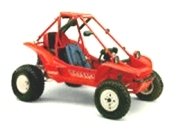
PilotOdyssey.com

 |
PilotOdyssey.com |
|
| It is currently Fri Apr 19, 2024 9:45 am |
|
All times are UTC - 5 hours [ DST ] |
 
|
Page 1 of 2 |
[ 31 posts ] | Go to page 1, 2 Next |
|
| Author | Message | |||
|---|---|---|---|---|
| canadian oddy |
|
|||
|
Joined: Tue Jan 17, 2012 3:19 am Posts: 7701 Location: Hope, B.C Canada |
|
|||
| Top | |
|||
| canadian oddy |
|
|||
|
Joined: Tue Jan 17, 2012 3:19 am Posts: 7701 Location: Hope, B.C Canada |
|
|||
| Top | |
|||
| dipnadactyl |
|
|||
|
Joined: Thu Jan 14, 2016 2:36 pm Posts: 313 Location: Wilmington NC |
|
|||
| Top | |
|||
| canadian oddy |
|
|||
|
Joined: Tue Jan 17, 2012 3:19 am Posts: 7701 Location: Hope, B.C Canada |
|
|||
| Top | |
|||
| methodical |
|
|||
|
Joined: Mon Oct 19, 2015 7:23 am Posts: 420 Location: Pennsylvania |
|
|||
| Top | |
|||
| canadian oddy |
|
|||
|
Joined: Tue Jan 17, 2012 3:19 am Posts: 7701 Location: Hope, B.C Canada |
|
|||
| Top | |
|||
| canadian oddy |
|
|||
|
Joined: Tue Jan 17, 2012 3:19 am Posts: 7701 Location: Hope, B.C Canada |
|
|||
| Top | |
|||
| methodical |
|
|||
|
Joined: Mon Oct 19, 2015 7:23 am Posts: 420 Location: Pennsylvania |
|
|||
| Top | |
|||
| Kuma |
|
|||
|
Joined: Thu Apr 29, 2010 12:53 am Posts: 1432 Location: Norco, CA |
|
|||
| Top | |
|||
| methodical |
|
|||
|
Joined: Mon Oct 19, 2015 7:23 am Posts: 420 Location: Pennsylvania |
|
|||
| Top | |
|||
| Akpilot |
|
|||
|
Joined: Sun Sep 25, 2005 2:03 am Posts: 185 Location: Anchorage Ak |
|
|||
| Top | |
|||
| canadian oddy |
|
|||
|
Joined: Tue Jan 17, 2012 3:19 am Posts: 7701 Location: Hope, B.C Canada |
|
|||
| Top | |
|||
| methodical |
|
|||
|
Joined: Mon Oct 19, 2015 7:23 am Posts: 420 Location: Pennsylvania |
|
|||
| Top | |
|||
| methodical |
|
|||
|
Joined: Mon Oct 19, 2015 7:23 am Posts: 420 Location: Pennsylvania |
|
|||
| Top | |
|||
| methodical |
|
|||
|
Joined: Mon Oct 19, 2015 7:23 am Posts: 420 Location: Pennsylvania |
|
|||
| Top | |
|||
| canadian oddy |
|
|||||
|
Joined: Tue Jan 17, 2012 3:19 am Posts: 7701 Location: Hope, B.C Canada |
|
|||||
| Top | |
|||||
| methodical |
|
|||
|
Joined: Mon Oct 19, 2015 7:23 am Posts: 420 Location: Pennsylvania |
|
|||
| Top | |
|||
| canadian oddy |
|
|||
|
Joined: Tue Jan 17, 2012 3:19 am Posts: 7701 Location: Hope, B.C Canada |
|
|||
| Top | |
|||
| canadian oddy |
|
|||
|
Joined: Tue Jan 17, 2012 3:19 am Posts: 7701 Location: Hope, B.C Canada |
|
|||
| Top | |
|||
| methodical |
|
|||
|
Joined: Mon Oct 19, 2015 7:23 am Posts: 420 Location: Pennsylvania |
|
|||
| Top | |
|||
| methodical |
|
|||
|
Joined: Mon Oct 19, 2015 7:23 am Posts: 420 Location: Pennsylvania |
|
|||
| Top | |
|||
| Akpilot |
|
|||
|
Joined: Sun Sep 25, 2005 2:03 am Posts: 185 Location: Anchorage Ak |
|
|||
| Top | |
|||
| canadian oddy |
|
|||
|
Joined: Tue Jan 17, 2012 3:19 am Posts: 7701 Location: Hope, B.C Canada |
|
|||
| Top | |
|||
| canadian oddy |
|
|||
|
Joined: Tue Jan 17, 2012 3:19 am Posts: 7701 Location: Hope, B.C Canada |
|
|||
| Top | |
|||
| Akpilot |
|
|||
|
Joined: Sun Sep 25, 2005 2:03 am Posts: 185 Location: Anchorage Ak |
|
|||
| Top | |
|||
 
|
Page 1 of 2 |
[ 31 posts ] | Go to page 1, 2 Next |
|
All times are UTC - 5 hours [ DST ] |
Who is online |
Registered users: Bing [Bot], Duneit, Google [Bot] |
| You cannot post new topics in this forum You cannot reply to topics in this forum You cannot edit your posts in this forum You cannot delete your posts in this forum You cannot post attachments in this forum |